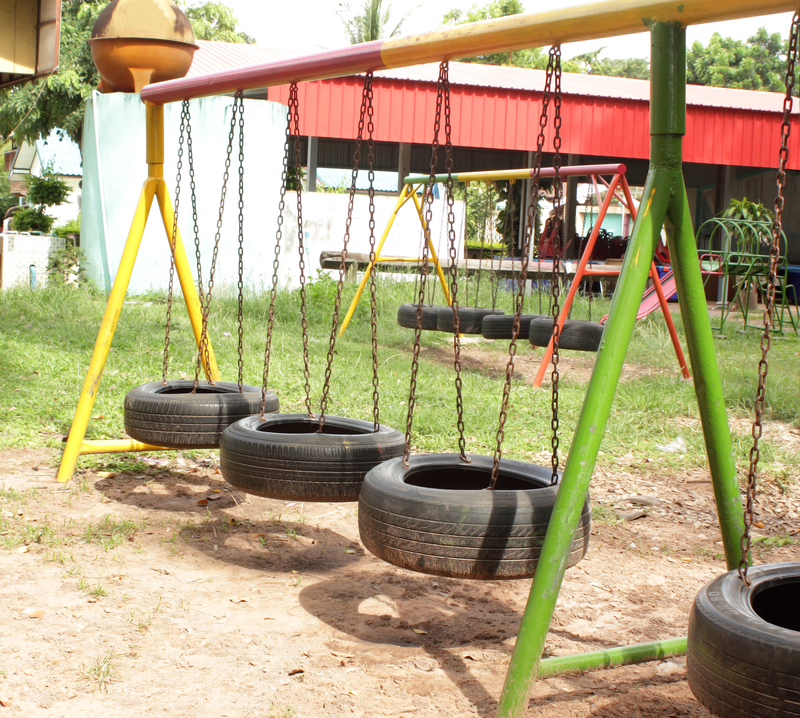Why Responsible PPE Waste Disposal Matters More Than Ever
The COVID-19 pandemic drastically changed the world, not just in how we interact, but also in the ways we protect ourselves and others. One prominent change has been the increased use of Personal Protective Equipment (PPE) in everyday life. From face masks and gloves to face shields and gowns, PPE has become ubiquitous in homes, workplaces, and public spaces. However, with this surge comes another pressing challenge: PPE waste management. In this comprehensive article, we'll explore why responsible PPE waste disposal matters now more than ever, the environmental and health impacts of improper disposal, and actionable steps individuals and organizations can take.
Proper PPE waste disposal, PPE recycling practices, safe disposal of personal protective equipment--these concepts are at the core of tackling a new, rapidly growing environmental issue.
The Explosive Rise of PPE Usage: A Numbers Game
Before the pandemic, PPE was mostly restricted to specific professions such as healthcare, agriculture, and certain manufacturing sectors. Suddenly, billions of people worldwide began using masks and gloves on a daily basis. The World Health Organization (WHO) estimated that approximately 89 million medical masks and 76 million gloves were required every month during the peak of the pandemic in 2020. Now, several years later, demand remains high due to continued healthcare needs, new variants, and lingering concerns.
- Face masks became standard in public life, with single-use masks making up the majority.
- Gloves saw expanded use not just in hospitals but also in retail, food services, and households.
- Protective gowns and face shields became commonplace in airports and offices.
This unprecedented demand has resulted in a corresponding explosion in PPE waste.

Environmental Impact of Irresponsible PPE Waste Disposal
Why Does PPE Waste Pose a Unique Environmental Threat?
Most PPE--especially disposable masks and gloves--are made from non-biodegradable plastics such as polypropylene, polyethylene, and PVC. When these items are discarded irresponsibly, they:
- Take up to 450 years to decompose
- Break down into microplastics, infiltrating soil and water systems
- Release toxic chemicals as they degrade
The sheer volume of PPE waste is overwhelming waste management systems globally. Municipalities that previously coped with household waste are fighting a losing battle against mountains of discarded masks and gloves littering streets, parks, beaches, and waterways.
Case Study: Oceans in Peril
According to environmental group OceansAsia, an estimated 1.56 billion masks entered the oceans in 2020 alone. These items join the already catastrophic influx of plastic pollution, harming marine life in several ways:
- Entanglement: Animals such as turtles, birds and fish become tangled in mask straps.
- Ingestion: Mistaking PPE for food, animals ingest plastics, which can be lethal or disrupt their digestive systems.
- Microplastic formation: As PPE degrades, it becomes microplastics, infiltrating the food chain and ultimately ending up on our plates.
PPE waste disposal has never been more urgent to protect our precious ecosystems.
Public Health Implications of Improper PPE Disposal
Transmission of Disease
PPE--by its very design--captures pathogens. When used gear is thrown away improperly, it can still carry and transmit viruses or bacteria. Individuals--especially sanitation workers--risk exposure if items are not securely bagged or disposed of in designated bins.
- Discarded masks can harbor respiratory pathogens for several days.
- Improperly disposed gloves and gowns may transfer pathogens to other waste or surfaces.
- Children, animals, or the homeless encountering littered PPE are particularly vulnerable.
Responsible PPE waste disposal is not just about keeping our streets clean; it's crucial for stopping the indirect spread of contagious diseases.
Strain on Waste Management Systems
The exponential increase in single-use PPE has overwhelmed recycling centers and sewage treatment plants worldwide, resulting in:
- Frequent clogging of filters due to mask straps and glove material
- Contaminated recycling loads sent to landfills because of improperly sorted PPE
- Hazardous conditions for waste management staff
PPE recycling and safe disposal practices are now essential to sustain both environmental and public health infrastructure.
How to Dispose of PPE Responsibly: Best Practices
Household PPE Disposal Tips
- Do NOT recycle single-use PPE: Disposable masks, gloves, and gowns should never go in your curbside recycling - they contaminate recyclables and endanger workers.
- Bag It Securely: Used PPE should be placed in a separate bag, tied, and then placed in regular trash, not recyclables.
- Cut the Straps: Before disposing of masks, cut the ear loops or straps to reduce risk to wildlife.
- Wash Hands Thoroughly: After handling used PPE, always wash your hands to prevent germ transfer.
Workplace & Institutional Guidelines
- Designated PPE Waste Bins: Install specialized bins for PPE disposal across facilities, marked with clear signage.
- Employee Training: Provide ongoing education about the importance and methods of safe PPE disposal.
- PPE Collection Agreements: Partner with certified hazardous waste disposal companies to handle large volumes safely and efficiently.
Adopting these habits helps minimize contamination risk and prevents the spread of waste-borne diseases.
Recycling and Innovations in PPE Waste Management
Can PPE Be Recycled?
Most single-use PPE is currently unrecyclable via standard municipal systems due to contamination and mixed materials. However, innovations are emerging:
- Specialized Recycling Programs: Companies like TerraCycle offer dedicated boxes for PPE collection and recycling, turning used gear into new products.
- Material Separation Technologies: New machinery can separate and sanitize mask components for safe recycling.
Though still nascent, these solutions offer hope for circular economies and reduced landfill impact.
Biodegradable and Reusable PPE
- Bioplastics: Some manufacturers are now making masks from easily compostable bioplastics.
- Washable Masks: Where appropriate, reusable cloth masks drastically reduce waste, provided they are sanitized properly.
These advances reduce the burden on our waste streams, but they require higher awareness and adapted disposal habits by consumers.
Legal and Regulatory Landscape of PPE Waste Disposal
Global and Local Regulations
- United States: The EPA and OSHA issue guidance for healthcare and hazardous PPE waste disposal but leave much of household PPE management to states and municipalities.
- European Union: Classified certain PPE as infectious waste, requiring special incineration in many countries.
- Asia-Pacific: Many regions lack robust guidelines, amplifying the environmental burden.
Compliance with regulations ensures safe handling and supports overall public health measures.
Potential Solutions: What Can We Do?
Actions for Individuals
- Dispose of PPE only in regular trash after sealing it in a plastic bag.
- Choose reusable PPE where possible and maintain sanitation practices.
- Support or participate in local PPE collection drives and recycling initiatives.
- Share knowledge about responsible PPE waste disposal with friends and family.
Steps for Organizations and Governments
- Invest in public awareness campaigns about PPE waste.
- Mandate PPE waste bins in public spaces and businesses.
- Subsidize research into biodegradable PPE and effective recycling technologies.
- Develop or strengthen local PPE waste disposal laws and ensure enforcement.
Collective action now can prevent environmental and health disasters down the line.

The Future: Towards Sustainable PPE Waste Solutions
The pandemic has forever altered society's relationship to hygiene and personal protection, making PPE a constant in our lives. Safe and responsible PPE waste disposal must become ingrained in our culture, much like recycling glass or paper. The future holds promise:
- Ongoing innovations in material science to make PPE more sustainable
- Public-private partnerships for effective collection and processing
- Enhanced education driving behavioral change
The fight against PPE pollution is not just about cleaning up after ourselves; it's about safeguarding the planet and the wellbeing of all communities.
Conclusion: Why We Must Act--Now
In summary, the pandemic has thrust PPE into the foreground of global consciousness, revealing a massive new front in the war on waste. Responsible personal protective equipment waste disposal is essential for:
- Preserving the environment and protecting wildlife
- Preventing future public health crises
- Relieving stressed waste management systems
- Complying with evolving regulations on hazardous waste
Each person, business, and government agency has a role to play. The steps may seem small, but the cumulative impact is enormous. Start today: dispose of your PPE safely, educate others, and support innovations that will secure a cleaner, healthier tomorrow for all.
The world is watching--let's make responsible PPE waste disposal the norm, and not just the exception.
